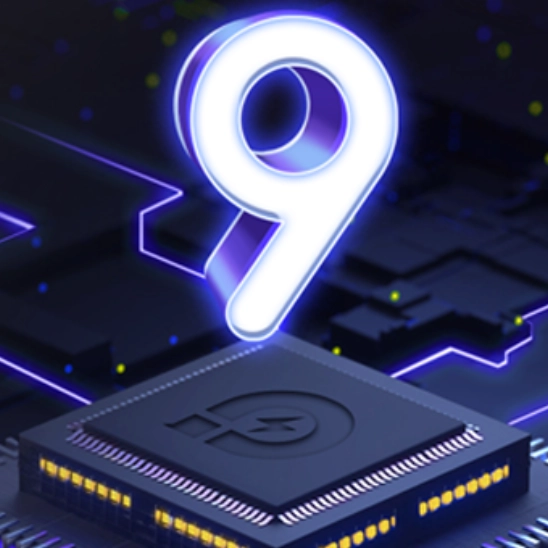News
Mobile Blockchain Gaming Goes Mainstream
You're scrolling through your phone, and suddenly you realize that gaming session actually earned you real money. Not points, not badges—actual cryptocurrency sitting in your digital wallet. If that sounds too good to be true, you haven't been paying attention to what's happening in blockchain gaming right now.

We're witnessing something pretty remarkable unfold before our eyes. The skeptics who dismissed crypto gaming as a ing fad? They're starting to look around nervously. Because this year isn't just another year for blockchain gaming—it's the year everything clicks into place. Market forces, a high Solana price chart, new technology, and adoption are converging in ways that make mainstream breakthrough not just possible, but inevitable.
What you'll discover in this article will surly surprise you. We'll explore how explosive market growth is validating what early adopters knew all along, examine why major gaming studios are finally taking notice, and uncover how your PC is becoming the secret weapon in this digital gold rush.
Market explosion in real time
Let's talk about money—because that's what gets everyone's attention. The blockchain gaming market isn't just growing; it's exploding in ways that make traditional gaming executives do double-takes. We're looking at projections that would make even the most optimistic crypto enthusiast pause.
These figures are interesting, though, because they are not from random startups trying to push their coins. Several market research companies are presenting rather similar images of exponential expansion. The similarity among several studies indicates something important is happening below the surface.
More telling than the financial projections? engagement metrics. Daily active wallets in blockchain gaming have surged by hundreds of percentage points over the past year. That's not speculation or market manipulation—that's real people, spending real time, in real games.
Asia Pacific leads this charge, and there's a reason for that. Advanced mobile infrastructure, massive gaming populations and cultural openness to digital assets create the perfect storm for adoption. What happens in Asia today often previews global trends tomorrow.
These aren't just numbers on a spreadsheet. They represent millions of gamers discovering that their skills, time, and dedication can generate tangible value. Once that realization spreads—and it's spreading fast—there's no putting that genie back in the bottle.
When big players finally the party
when blockchain gaming meant crude interfaces and games that felt more like work than entertainment? Those days are fading faster than dial-up internet. The industry's maturation isn't just about better graphics or smoother gameplay—though we're getting those too. It's about fundamental shifts in how games are built and monetized.
The move from "play-to-earn" to "play-to-own" might sound like semantic gymnastics, but it represents a crucial evolution. Early crypto games often felt like thinly veiled job simulators. You'd grind through repetitive tasks for token rewards, wondering when the "game" part would kick in. That model burned out players faster than they could onboard new ones.
Today's blockchain games flip that script. Players own their achievements, their items, their progress. When you spend months building a character or collecting rare items, they're actually yours—not licensed temporarily from some distant server farm. That ownership creates psychological investment traditional games can't match.
Infrastructure improvements deserve credit here too.Layer-2 solutions have practically addressed the speed and cost issues afflicting early blockchain games. Once eating greedily into income, transaction fees now barely exist. Previously stuttering gameplay under network congestion now runs smoothly.
Most crucially, maybe, big gaming companies are not observing from the sidelines anymore. They are deliberately including blockchain components in ways that improve rather than divert focus from main gameplay. When reputable developers with track histories embrace this technology, it validates blockchain gaming for general consumers who might otherwise be dubious.
Why your computer still hold weight
Here's where things get interesting for PC gamers. While everyone's debating the future of blockchain gaming on mobile devices, desktop players are building significant advantages. Android emulator like LDPlayer isn't just allowing PC access to mobile crypto games—they're transforming how those games are played.
Think about the inherent limitations of mobile gaming for a moment. Battery life, processing power, screen size, input methods—all constrained by the physics of handheld devices. LDPlayer removes those constraints entirely. Your crypto gaming sessions can run indefinitely without battery anxiety. Complex game mechanics become manageable with keyboard and mouse precision.
Multi-instance functionality changes the game entirely, quite literally. Many blockchain games involve resource management, farming mechanics, or time-gated progression systems that benefit from multiple management. Running several instances simultaneously transforms grinding from tedious to strategic.
The performance advantages matter more in crypto gaming than traditional mobile games. When your in-game actions have real monetary value, lag or crashes aren't just annoying—they're costly. PC emulation provides the stability and performance consistency that serious crypto gaming demands.
Operation recording features become particularly valuable for blockchain games' often repetitive elements. Instead of manually performing the same resource-gathering sequences dozens of times daily, you can automate routine tasks while focusing on strategic decisions that actually require human judgment.
Anything but quiet
So here we are, watching traditional gaming's next evolution unfold in real time. The blockchain gaming mainstream breakthrough isn't coming with fanfare and press conferences; it's happening through millions of individual moments when players realize they're earning real value from their gaming time.
Sure, challenges remain. Regulatory uncertainty still creates headaches for developers and players alike. Price volatility can turn today's earnings into tomorrow's disappointments. Not everyone's ready to manage crypto wallets or understand gas fees. But these obstacles are shrinking while adoption accelerates.
What makes this year different isn't any single technological breakthrough or market force. It's the convergence of -friendly interfaces, proven earning potential, mainstream studio adoption, and infrastructure that finally works reliably. When all those elements align simultaneously, tipping points become inevitable.
The question isn't whether blockchain gaming will go mainstream; it's how traditional gaming will respond when it does. Will established publishers adapt quickly enough to compete with crypto-native studios? Will console manufacturers embrace blockchain integration or resist it? Those answers will shape gaming's next decade.
For now, we're living through one of those rare moments when you can see the future taking shape before it becomes obvious to everyone else. The numbers, the technology, and the behavior all point in the same direction. 2025 might just be ed as the year crypto gaming stopped being alternative and started being inevitable.


LDPlayer Emulator


LDPlayer Emulator





